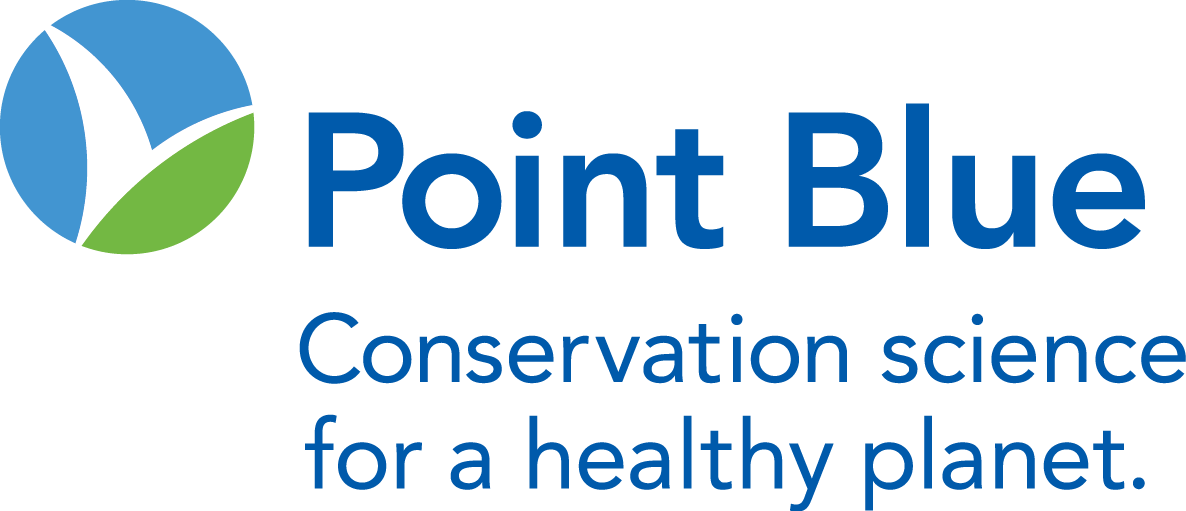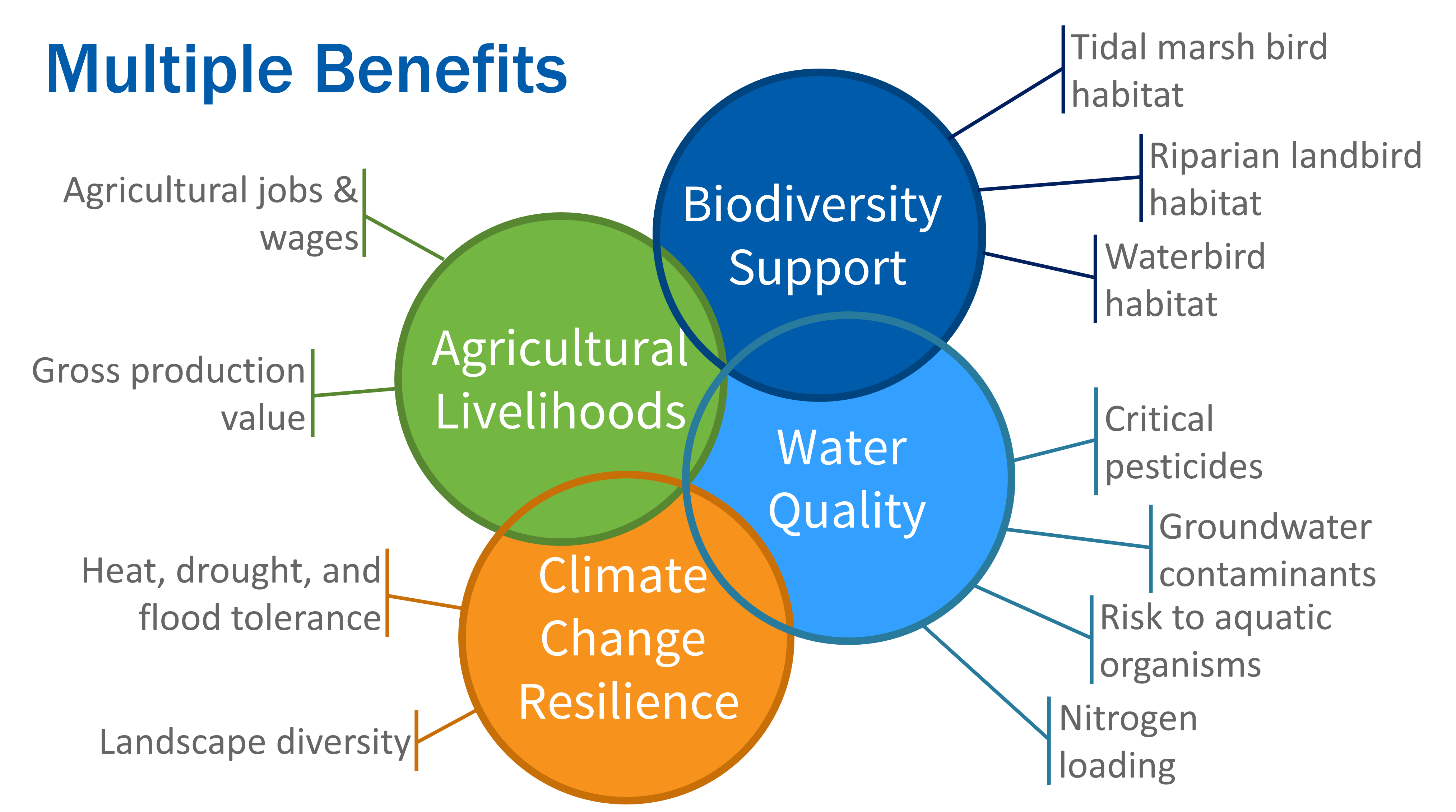
Introduction
The DeltaMultipleBenefits R package serves as an open-source, science-based framework for estimating the net impacts of scenarios of landscape change on multiple metrics of interest. It is intended to support land use planning, management, conservation, and community engagement in the Sacramento-San Joaquin River Delta by identifying potential benefits and trade-offs of proposed or anticipated changes in land cover.
Installation
You can install the development version from GitHub with:
# install.packages("devtools")
devtools::install_github("pointblue/DeltaMultipleBenefits")How to use
This package provides tools for evaluating land cover rasters supplied by the user to estimate the magnitude of the benefits associated with each landscape and the differences in benefits among landscapes, such as between current baseline land cover and a proposed or anticipated alternative land cover.
Benefit Categories and Metrics
The benefit categories currently addressed include: Agricultural Livelihoods, Water Quality, Climate Change Resilience, and Biodiversity Support. Each category is represented by multiple metrics:

This framework is still in development and designed to readily incorporate additional species, models, data, and metrics. Please contact us to collaborate on incorporating additional metrics or data.
Scenarios & Alternative Landscapes
By comparing landscape totals for each metric estimated from a baseline landscape and alternative landscapes representing proposed or anticipated changes, the expected direction and magnitude of the net change in each metric is estimated. In the initial development of this framework, we built simple alternative landscapes representing changes driven by one or two individual drivers of landscape change, allowing evaluation of their individual impacts. However, more complex and realistic scenarios of future landscape change can also be evaluated.
Evaluating New Scenarios
This package includes a vignette that serves as a tutorial outlining the major steps of analyzing alternative Delta landscapes and comparing them to each other, including:
- Preparing new landscape scenarios for analysis
- Summarizing the net change in the total area of each land cover class
- Estimating the net change in simple metrics
- Estimating the net change in metrics informed by spatial models
For more information
- Project Overview: Prior and current phases of this project’s development
- Supporting Information: Reports, publications, and data sets including all previously developed metrics, models, spatial data, and alternative landscapes.
Funding Statement
These data were originally developed as part of the project Trade-offs and Co-benefits of Landscape Change on Bird Communities and Ecosystem Services in the Sacramento–San Joaquin River Delta, funded by Proposition 1 Delta Water Quality and Ecosystem Restoration Program, Grant Agreement Number – Q1996022, administered by the California Department of Fish and Wildlife.
A second phase of development is currently underway, Trade-offs and Co-benefits of Landscape Change in the Sacramento-San Joaquin River Delta: Phase II Tidal Wetlands and Restoration, funded by the Water Quality, Supply, and Infrastructure Improvement Act of 2014 (Proposition 1, CWC § 79707), grant agreement number Q2296017, administered by the California Department of Fish and Wildlife.
